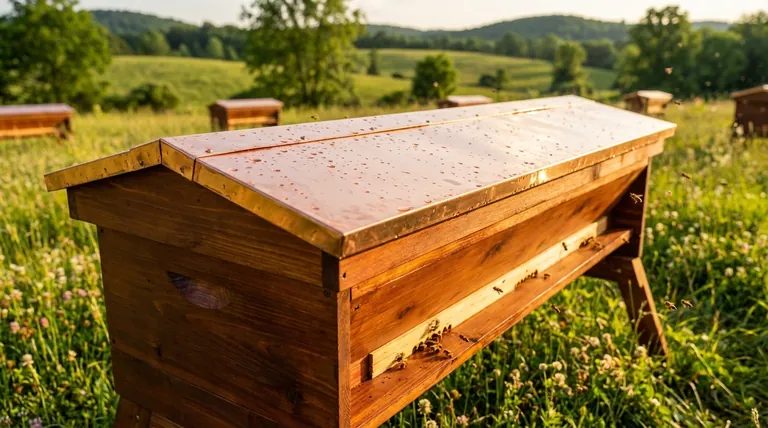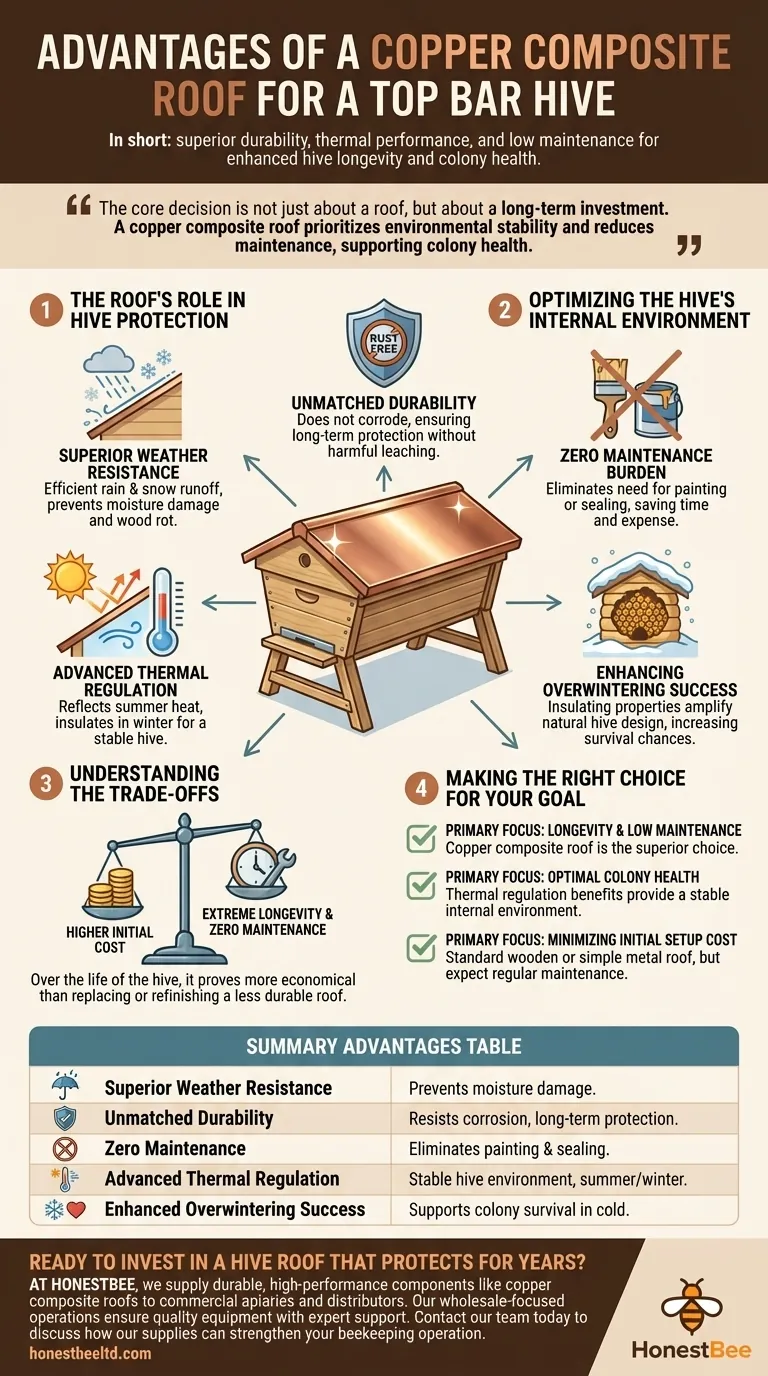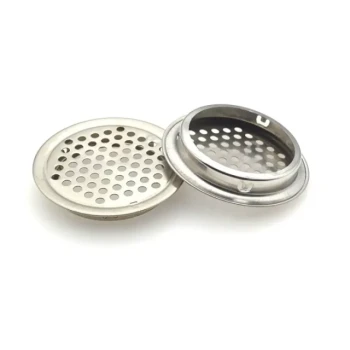In short, a copper composite roof for a top bar hive offers superior durability, thermal performance, and low maintenance compared to standard roofing materials. It enhances the hive's longevity and appearance by effectively shedding rain and snow, reflecting summer heat, and insulating during winter, all without requiring painting or sealing.
The core decision is not just about a roof, but about a long-term investment. A copper composite roof prioritizes the hive's environmental stability and reduces beekeeper maintenance, directly supporting the health of the colony within.

The Roof's Role in Hive Protection
A hive's roof is its primary defense against the elements. For a top bar hive—a long, horizontal structure—the roof's performance is critical for protecting the entire length of the colony.
Superior Weather Resistance
A key advantage is its ability to manage precipitation. The material is designed for efficient rain and snow runoff, preventing moisture from seeping into the hive body and protecting the wood from rot.
Unmatched Durability
Unlike standard wood or metal, a copper composite roof does not corrode. This means it won't break down over time or leach harmful materials into the surrounding soil, ensuring a safer environment for your bees and garden.
Zero Maintenance Burden
This material eliminates the need for painting or sealing. It naturally retains its color and protective qualities, saving you the recurring time and expense associated with maintaining a standard wooden roof.
Optimizing the Hive's Internal Environment
A stable internal environment is crucial for a colony's health, reducing stress and allowing the bees to focus on foraging, brood-rearing, and honey production.
Advanced Thermal Regulation
The composite material reflects heat better than regular copper and provides superior insulation. This keeps the hive cooler in direct sun and helps retain warmth during the winter, reducing the energy your bees must expend to regulate their cluster's temperature.
Enhancing Overwintering Success
The insulating properties of a copper composite roof directly complement the natural advantages of a top bar hive's design. The horizontal layout already helps bees move to their food stores in winter, and a well-insulated roof amplifies this effect, increasing the colony's chances of survival.
Understanding the Trade-offs
True expertise requires acknowledging that no solution is perfect for every situation. A copper composite roof is a high-performance component, and this comes with considerations.
Initial Cost vs. Long-Term Value
The primary trade-off is upfront cost. A copper composite roof is a premium feature and will be more expensive than a simple wooden or galvanized metal roof.
This higher initial investment is balanced by its extreme longevity and zero maintenance needs. Over the life of the hive, it can prove more economical than repeatedly replacing or refinishing a less durable roof.
Making the Right Choice for Your Goal
Your choice of roofing material should align with your specific beekeeping priorities.
- If your primary focus is longevity and low maintenance: A copper composite roof is the superior choice, as it eliminates the need for future work and withstands the elements for years.
- If your primary focus is optimal colony health: The thermal regulation benefits of a copper composite roof provide a more stable internal environment, reducing stress on the bees in both summer and winter.
- If your primary focus is minimizing initial setup cost: A standard wooden or simple metal roof will get your hive started, but be prepared for regular maintenance and potential replacement down the line.
Ultimately, choosing a roof is a strategic decision that impacts both your workload and your colony's well-being.
Summary Table:
| Advantage | Benefit for Your Hive |
|---|---|
| Superior Weather Resistance | Efficiently sheds rain and snow, preventing moisture damage and wood rot. |
| Unmatched Durability | Resists corrosion, ensuring long-term protection without harmful leaching. |
| Zero Maintenance | Eliminates the need for painting or sealing, saving time and cost. |
| Advanced Thermal Regulation | Reflects summer heat and insulates in winter for a stable hive environment. |
| Enhanced Overwintering Success | Insulating properties support colony survival during cold months. |
Ready to invest in a hive roof that protects your colony for years to come?
At HONESTBEE, we supply commercial apiaries and beekeeping equipment distributors with durable, high-performance components like copper composite roofs. Our wholesale-focused operations ensure you get the quality equipment your bees deserve, backed by expert support.
Contact our team today to discuss how our supplies can strengthen your beekeeping operation.
Visual Guide

Related Products
- Telescopic Beehive Outer Cover Lid Roof with Galvanised Sheeting for Langstroth Hive and Beehive Outer Cover
- Inner Beehive Cover for Beekeeping Bee Hive Inner Cover
- Professional Insulated Winter Hive Wrap for Beekeeping
- Long Langstroth Style Horizontal Top Bar Hive for Wholesale
- Stainless Steel Round Beehive Air Vents for Ventilation
People Also Ask
- Can bees enter from both sides of the outer cover? Master Seasonal Hive Management
- How do you install the Langstroth hive roof? A Step-by-Step Guide for a Healthy Colony
- How can garden hive lids be secured to prevent them from being blown off? | Reliable Methods for Apiary Protection
- What maintenance is recommended for the Langstroth hive roof? Protect Your Hive with Natural Tung Oil
- What is the purpose of the inner and outer covers in a beehive? Essential for Hive Health & Management



















